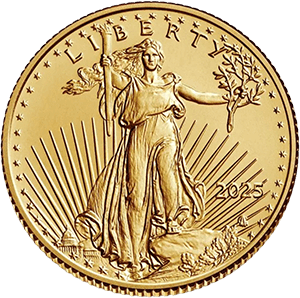
In the crucible of the 5th century BCE, as ancient Greece rose to political and philosophical prominence, a small silver coin emerged that would carry the weight of an entire civilization’s identity. The Athenian Owl Tetradrachm was more than a medium of exchange — it was a symbol of power, consistency, and trust, circulating from the Aegean to the Indus Valley and leaving a mark not only on trade but on the very concept of state-sponsored currency.
The Foundations of Athenian Coinage
Before the owl became a global icon, Athenian coinage existed in a state of experimentation, much like other city-states in the Greek world. Coinage itself had only recently emerged in Ionia and Lydia in the late 7th century BCE, and most city-states struck coins primarily for local use. However, Athens, rich in silver from the Laurion mines in southeastern Attica, seized a rare opportunity: to leverage its resource wealth to standardize, scale, and distribute a coin with the potential to unite commerce and culture.
Minted beginning around 510–480 BCE and gaining widespread usage during the Classical period, the tetradrachm was the equivalent of four drachmas and weighed roughly 17.2 grams of high-purity silver. Its consistent weight, high metallic integrity, and instantly recognizable design made it a trusted instrument across city-states, empires, and trading ports.
Athena and Her Owl: Iconography with Intent
Athenian pride and propaganda were stamped into every coin. The obverse bore the helmeted profile of Athena, the city’s divine patroness — goddess of wisdom, war, and craft. Her depiction varied slightly over time but retained an austere, powerful dignity. The reverse showed the owl, her sacred companion, perched with upright posture, flanked by an olive sprig (symbol of peace and prosperity) and the abbreviation ΑΘΕ, an inscription for “Athens.”
This was no accident of design. In an age when literacy was limited and coinage traveled far beyond native speakers, the owl served as a visual anchor of legitimacy. The bird's large, almond-shaped eyes, square stance, and angular rendering gave the coin a bold, archaic aesthetic. Even when other cities and empires began to imitate it — and many did — none matched the striking clarity and authority of the Athenian original.
In a very real sense, this was early branding. The owl became synonymous not only with Athens but with honest weight and value. To hold one was to trust in its power.

Empire Built on Silver: The Delian League and Maritime Dominance
Athens' rise as a maritime superpower coincided with the owl’s ascent as a commercial standard. Following the Greco-Persian Wars, Athens led the formation of the Delian League — an alliance of city-states formed ostensibly to defend against future Persian aggression. But under Periclean leadership, Athens transformed this alliance into a tributary empire.
And what did many member-states pay their tribute in? Athenian tetradrachms.
The coin’s dominance was reinforced by Athens’ policy of accepting tribute only in its own currency — a brilliant stroke of economic centralization. This monetary sovereignty allowed Athens to fund the construction of monumental architecture (including the Parthenon), to maintain a massive fleet of triremes, and to finance the salaries of public officials and jurors in a democratic system that, for the first time in history, paid citizens to participate in civic life.
The tetradrachm didn't just fund democracy; it enabled it.
International Trade and Monetary Trust
As the coin spread along trade routes — reaching Egypt, Syria, the Levant, and as far east as India — it became the de facto silver standard in Mediterranean and Near Eastern commerce. Merchant caravans carried owls inland while ships dispersed them across the sea. The tetradrachm was so recognizable that even foreign empires began to mint their own imitations to cash in on its credibility. From the Seleucids to the Hellenistic kingdoms of Asia Minor, the owl took flight far beyond Athenian borders.
Yet its strength lay not merely in silver, but in reputation. The Owl Tetradrachm provided a sense of security in an uncertain world — a coin whose value, like its city of origin, could be counted on. This made it a preferred currency for international trade, temple donations, and military payment.
Even in times of political decline or economic hardship, the owl remained desirable. It is telling that more examples of Athenian tetradrachms have been found outside of Athens than within — a sign of their wide acceptance and extended life in circulation.
Decline, Legacy, and Numismatic Reverence
By the end of the Peloponnesian War (404 BCE), Athens' power had diminished, and with it, the minting of the classic owl. Subsequent versions grew more elaborate but lost some of the stylistic simplicity that gave the original its gravitas. Still, the coin remained in use well into the Hellenistic period.
Numismatists today regard the Athenian Owl Tetradrachm not only as a masterpiece of ancient minting but as one of the earliest truly international currencies. Its impact shaped the concept of “trusted tender,” and its legacy can be felt in every national coin that seeks to project sovereignty, stability, and cultural identity.
Modern collectors continue to prize these coins not just for their beauty or rarity, but because they tell a story — one of silver pulled from the depths of Attica, struck with the image of a goddess, and carried by the hands of traders, soldiers, philosophers, and kings.
A Final Word — Or Perhaps, a First Chapter
The Owl Tetradrachm exemplifies the ancient world’s understanding that money was not merely an economic tool, but a cultural force. It embodied the ideals of Athens — rationality, innovation, commerce, and civic pride — and in doing so, became a silent but powerful engine of history.
Its influence didn’t end with the fall of Athens, and neither does our story.
Stay tuned for Part 2: “The Roman Denarius – The Silver Coin That Funded Conquest and Cemented Roman Power.”
We’ll explore how a small coin became the economic engine of an empire — and a cautionary tale for the ages.







